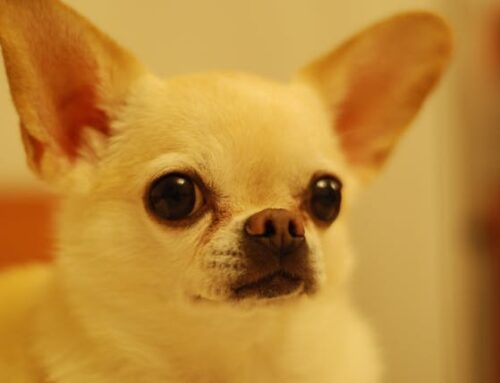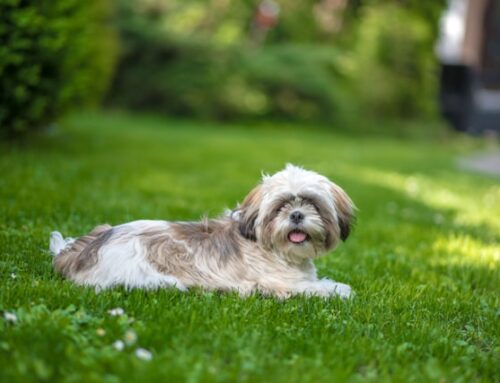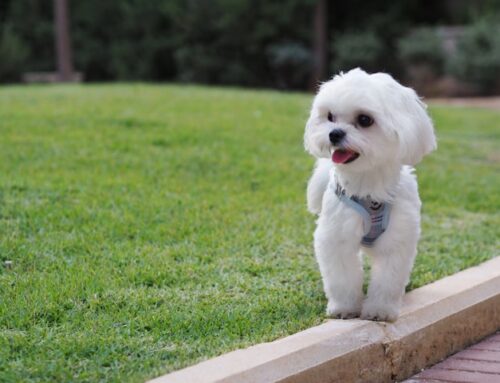Overview
Introduction: Toy Poodle Vs Miniature Poodle
Brief Overview of Miniature and Toy Poodle

Miniature and Toy Poodles are beloved breeds known for their intelligence, elegance, and playful nature. Miniature Poodles, standing around 10 to 15 inches tall at the shoulder, are larger than Toy Poodles but smaller than Standard Poodles, their larger counterparts.
They are recognized as separate breeds by the American Kennel Club (AKC) and are both considered national dogs of France, where they originated. Miniature and Toy Poodles are cherished for their hypoallergenic coats and are popular choices for families and individuals alike, often seen as the smaller cousins of the Standard Poodle.
Purpose of the Comparison Article
The purpose of comparing Toy Poodles and Miniature Poodles is to help potential dog owners understand the differences between these two popular breeds. While both breeds are smaller versions of the Standard Poodle, they have distinct characteristics and temperaments.
By highlighting these differences, readers can make an informed decision about which breed is best suited to their lifestyle and preferences. Additionally, discussing the importance of responsible breeding practices and avoiding “teacup” Poodles can help ensure that families bring home a healthy dog that will thrive as a family pet.
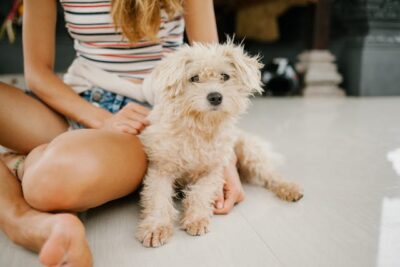
History and Origins: Toy Poodle vs Miniature Poodle
Origins of the Poodle Breed
The Poodle breed originated in Germany, where the Standard Poodle was originally bred as water retrievers. The Toy Poodle and Miniature Poodle were later bred down from the Standard Poodle to serve as companions to the nobility. In France, the Miniature Poodle stands as the national dog, highlighting their popularity and esteemed status as companion dogs.
Development of Toy Poodle and Mini Poodle
The Poodle breed’s origins trace back to Germany, where the Standard Poodle was developed as a water retriever. Later, in France, the Toy Poodle and Miniature Poodle were bred down from the Standard Poodle to serve as companions to the nobility.
The Miniature Poodle stands as the national dog of France, showcasing their esteemed status. Both the Toy Poodle and Miniature Poodle share the same origins, descending from larger Standard Poodles.
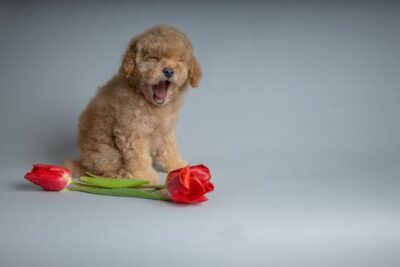
Physical Characteristics: Toy Poodle vs Miniature Poodle
Size Differences Among Standard, Miniature, and Toy Poodle
Toy Poodles are the smallest of the three types, standing under 10 inches tall at the shoulder and weighing between 4 to 6 pounds. Miniature Poodles are a bit larger, standing about 10 to 15 inches tall at the shoulder and weighing 10 to 15 pounds.
Both Miniature and Toy Poodles are smaller versions of the Standard Poodles, which stands over 15 inches tall at the shoulder and weighs 40 to 70 pounds. Understanding the size differences between these types of Poodles is crucial for poodle owners and potential dog owners, as their care and needs can differ slightly based on their size.
Coat Types and Colors of Standard, Miniature, and Toy Poodle
Standard, Miniature, and Toy Poodles are all recognized for their distinct breed characteristics, including their coat types and colors. Poodles have a single-layered, dense, and curly coat that is hypoallergenic and minimally sheds.
They come in a variety of colors, including white, black, brown, and apricot, among others. Despite their size differences, all three sizes of Poodles share these coat characteristics, making them popular choices for those seeking hypoallergenic and low-shedding breeds, especially for smaller dogs like Teacup Poodles. Poodles were particularly favored by French nobility for their elegant appearance and intelligence.
Facial Features and Expressions
Toy Poodles are the smallest of the three sizes, standing under 10 inches tall at the shoulder and weighing between 4 to 6 pounds. Their delicate features include a finely chiseled head with almond-shaped eyes and a nose that can be black or brown, depending on the coat color.
In contrast, Miniature Poodles are slightly larger, standing between 10 to 15 inches tall and weighing 10 to 15 pounds. Their faces exhibit a similar refinement, with expressive eyes and a distinctively long, straight muzzle.
Both sizes boast an alert and intelligent expression, traits that are characteristic of the Poodle breed as a whole.

Temperament and Personality: Toy Poodle vs Miniature Poodle
Toy Poodles’ Temperament Traits
Toy Poodles are known for their intelligence, agility, and friendly nature. They are highly trainable and excel in obedience and agility sports. Their affectionate and lively personality makes them excellent companions for families and individuals alike.
Miniature Poodles’ Temperament Traits
Mini Poodles are known for their intelligence, hypoallergenic coat, and friendly demeanor. They are highly adaptable and do well in various living situations, making them ideal for apartment dwellers or families with small yards. Their playful and affectionate nature makes them excellent companions for people of all ages.
Comparing Their Intelligence and Trainability
When comparing Miniature and Toy Poodles, both breeds are highly intelligent dogs and easy to train. However, Miniature Poodles may have a slight edge in trainability due to their larger size and potentially longer attention span.
Both breeds are prone to separation anxiety if not properly socialized and provided with mental stimulation. Proper socialization and mental stimulation are crucial for both breeds to thrive and prevent behavioral issues.

Exercise and Activity Needs: Toy Poodle vs Miniature Poodle
Exercise Requirements for Toy Poodle
Toy Poodles have moderate exercise needs and enjoy daily walks or playtime. They also benefit from mental stimulation, such as puzzle toys or obedience training, to keep their minds engaged. While they can adapt well to apartment living, regular exercise is important to prevent boredom and maintain their overall health.
Exercise Requirements for Miniature Poodle
Miniature Poodles have moderate to high exercise needs and benefit from daily walks, playtime, and mental stimulation. They are active and intelligent dogs that enjoy activities like obedience training, agility, and fetch. Regular exercise is important for their physical and mental well-being, helping to prevent boredom and behavioral issues.
Differences in Energy Levels
When comparing Toy Poodles and Miniature Poodles, one key difference lies in their energy levels. While both types of Poodles are energetic and make excellent companions, Toy Poodles typically have lower energy levels compared to Miniature Poodles.
This means that Toy Poodles may require less daily exercise and outdoor activities compared to their larger counterparts. Miniature Poodles, on the other hand, tend to be more active and may benefit from more exercise and outdoor activities to keep them mentally and physically stimulated.

Grooming and Maintenance: Toy Poodle vs Miniature Poodle
Grooming Needs for Toy Poodle
Toy Poodles have a curly, dense coat that requires regular grooming to prevent matting and tangling. Regular brushing several times a week is necessary to keep their coat in good condition.
They also benefit from professional grooming every 4-6 weeks to maintain the shape of their coat and keep them looking their best. Regular grooming not only keeps their coat healthy but also helps to reduce shedding and keep their skin clean.
Grooming Needs for Miniature Poodle
Miniature Poodles have a dense, curly coat that requires regular grooming to prevent matting and tangling. Regular brushing several times a week is necessary to keep their coat in good condition. They also benefit from professional grooming every 4-6 weeks to maintain the shape of their coat and keep them looking their best.
Proper grooming not only enhances their appearance but also contributes to their overall health and well-being.
Maintenance Tips for Their Coats
Both Toy and Miniature Poodles require regular grooming to maintain their curly coats. Brushing several times a week helps prevent matting and tangling. Professional grooming every 4-6 weeks is also recommended to maintain the shape of their coat and keep them looking their best. Regular grooming not only keeps their coat healthy but also helps to reduce shedding and keep their skin clean.

Health and Life Expectancy: Toy Poodle vs Miniature Poodle
Common Health Issues in Toy Poodles
Toy Poodles are generally healthy dogs, but like all breeds, they can be prone to certain health issues. Some common health issues in Toy Poodles include patellar luxation, progressive retinal atrophy (PRA), and dental problems. Regular veterinary check-ups, a balanced diet, and regular exercise can help maintain their overall health and well-being.
Common Health Issues in Miniature Poodles
Miniature Poodles are generally healthy dogs, but like all breeds, they can be prone to certain health issues. Some common health issues in Miniature Poodles include hip dysplasia, progressive retinal atrophy (PRA), and patellar luxation. Regular veterinary check-ups, a balanced diet, and regular exercise can help maintain their overall health and well-being.
Life Expectancy between the Two Sizes
When comparing Toy Poodles and Miniature Poodles, both sizes are generally long-lived, with an average lifespan of 10 to 15 years. However, Miniature Poodles may have a slightly shorter lifespan due to their larger size, which can predispose them to issues such as hip dysplasia.
Both sizes can be prone to autoimmune disorders and inflammatory diseases, so it’s important to get a puppy from a reputable breeder who tests for genetic health conditions like Addison’s disease and von Willebrand’s Disease.

Feeding and Nutrition: Toy Poodle vs Miniature Poodle
Dietary Needs for Toy Poodles
Toy Poodles have specific dietary needs to maintain their health and well-being. They require a balanced diet rich in high-quality protein, essential fatty acids, vitamins, and minerals. Toy Poodles also benefit from smaller, more frequent meals to prevent hypoglycemia due to their small size.
Dietary Needs for Miniature Poodles
Miniature Poodles require a balanced diet that is rich in protein, vitamins, and minerals to maintain their health and well-being. It’s important to feed them high-quality food appropriate for their size and age to prevent obesity and other health issues. Like Toy Poodles, Miniature Poodles benefit from smaller, more frequent meals to maintain stable blood sugar levels.
Differences in Feeding Schedules
Miniature Poodles and Toy Poodles may have different feeding schedules due to their size and energy levels. Toy Poodles may benefit from smaller, more frequent meals to prevent hypoglycemia, while Miniature Poodles may do well with two or three larger meals spaced throughout the day. It’s important to monitor their weight and adjust their feeding schedule accordingly to maintain a healthy weight.

Suitability as Pets: Toy Poodle vs Miniature Poodle
Toy Poodles as Family Pets
Toy Poodles make excellent family pets due to their small size, friendly nature, and adaptability to various living situations. They are well-suited for apartment living and can thrive in a variety of environments. Toy Poodles are also known for their affectionate and lively personality, making them excellent companions for families and individuals alike.
Miniature Poodles as Family Pets
Miniature Poodles are also great family pets, known for their affectionate nature and intelligence. They are adaptable to different living situations and can be wonderful companions for families with children and other pets. Their playful and affectionate demeanor makes them excellent companions for people of all ages.
Factors to Consider Before Choosing Between the Two
When choosing between a Toy Poodle and a Miniature Poodle as a pet, several factors should be considered. Toy Poodles are smaller and may be more fragile, making them better suited for households without young children.
Miniature Poodles are slightly larger and may be more robust, but both sizes are highly intelligent and require daily exercise and mental stimulation. Additionally, both sizes are generally considered excellent companions but can be prone to certain health conditions, so regular veterinary check-ups are important.

Exercise and Training Tips: Toy Poodle vs Miniature Poodle
Exercise Ideas for Toy Poodles
Toy Poodles benefit from a variety of exercise activities, including short walks, playtime in the yard, and interactive games that stimulate their mind. They also enjoy agility training and other mentally stimulating activities. Regular exercise is important for Toy Poodles to maintain their physical and mental well-being.
Training Techniques for Miniature Poodles
Miniature Poodles respond well to positive reinforcement training methods, such as clicker training and reward-based training. They are eager to please and enjoy learning new tricks and commands. Consistent training and positive reinforcement can help ensure a well-behaved and happy Miniature Poodle.
Training Challenges and How to Overcome Them
Both Toy and Miniature Poodles are excellent companions but may present different exercise and training challenges. Toy Poodles, due to their smaller size, may require gentler training methods and shorter exercise sessions.
On the other hand, Miniature Poodles, while still trainable from a young age, may have more energy and require more physical activity compared to their smaller counterparts. Regardless of size, consistent training and exercise tailored to their needs can help overcome these challenges and ensure a well-behaved and happy poodle.

Choosing the Right Poodle Size for You: Toy Poodle vs Miniature Poodle
Lifestyle Considerations
When choosing between a Toy Poodle and a Miniature Poodle, consider your lifestyle. Toy Poodles are well-suited for apartment living and require less space, making them ideal for individuals or families in smaller homes.
Miniature Poodles, on the other hand, may be better suited for families with larger homes or access to outdoor space, as they are more active and require more exercise.
Space Requirements
When deciding between a Toy Poodle and a Miniature Poodle, consider your living space. Toy Poodles, being smaller, require less space and can thrive in apartments or smaller homes. Miniature Poodles, while still adaptable, may benefit from a larger living area or access to a yard for exercise and play.
Personal Preferences
When choosing between a Toy and Miniature Poodle, personal preferences play a significant role. Both sizes, when obtained from a reputable breeder, make excellent companions and can adapt well to various lifestyles.
Toy Poodles may be preferred by those looking for a smaller lap dog, while Miniature Poodles may be more suitable for pet owners with other dogs or breeds due to their slightly larger size.

Toy Poodle vs Miniature Poodle: Which Is Right for You?
Summary of Key Differences: Toy Poodle vs Miniature Poodle
Toy Poodles and Miniature Poodles are beloved breeds known for their intelligence, elegance, and playful nature. While both are smaller versions of the Standard Poodle, they have distinct characteristics and temperaments.
Toy Poodles are smaller, standing under 10 inches tall and weighing 4 to 6 pounds, while Miniature Poodles are slightly larger, standing 10 to 15 inches tall and weighing 10 to 15 pounds.
Toy Poodles may require less exercise and space, making them suitable for apartment living, while Miniature Poodles are more active and may benefit from a larger living space. Both breeds are intelligent, affectionate, and hypoallergenic, making them popular choices for families and individuals.
Matching Characteristics with Lifestyle
When choosing between a Toy Poodle and a Miniature Poodle, it’s essential to consider your lifestyle and living situation. Toy Poodles are well-suited for apartment living and require less space, making them ideal for individuals or families in smaller homes. They are also a good choice for people looking for a smaller, more portable companion.
Miniature Poodles, on the other hand, may be better suited for families with larger homes or access to outdoor space, as they are more active and require more exercise. Both breeds are highly adaptable and can thrive in various environments, but their size and energy levels should be matched with your lifestyle to ensure a happy and healthy companion.
Personal Reflections and Recommendations
In conclusion, both Toy Poodles and Miniature Poodles are wonderful breeds with their own unique traits and characteristics. When choosing between the two, consider your living situation, activity level, and preferences. If you live in a small space or prefer a smaller dog, a Toy Poodle may be the perfect fit.
If you have a larger home or enjoy outdoor activities, a Miniature Poodle may be more suitable. Whichever breed you choose, be sure to provide them with plenty of love, attention, and proper care to ensure a happy and healthy companion for years to com
Conclusion: Toy Poodle vs Miniature Poodle
In conclusion, both Toy and Miniature Poodles are excellent companions, known for their intelligence, affectionate nature, and playful demeanor. Whether you choose a Toy or Miniature Poodle, you’ll be adding a loyal and loving companion to your family.
Consider your lifestyle, living situation, and preferences when choosing the right size Poodle for you. Both sizes can be prone to inflammatory diseases, so regular veterinary check-ups are important for maintaining their health and well-being. If you are looking for either a Standard Poodle, Miniature Poodle, or Toy Poodle, or all of them, we are selling all three puppies in Georgia Puppies Online.
Our puppies are thoughtfully bred from reputable breeders, well-loved, socialized, and healthy. Here is the link to Poodle puppies for sale in Georgia and surrounding areas, here is the link to Miniature Poodle puppies for sale in Georgia and surrounding areas, and lastly, here is the link to Toy Poodle puppies for sale in Georgia and surrounding areas.
Frequently Asked Questions (FAQs): Toy Poodle vs Miniature Poodle
- What are the main differences between Toy Poodles and Miniature Poodles?
- Both Miniature Poodles and Toy Poodles are smaller versions of the Standard Poodle, but they differ in size. Miniature Poodles are larger, standing over 10 inches tall at the shoulder, while Toy Poodles are under 10 inches tall.
- Do Toy Poodles and Miniature Poodles have different grooming needs?
- Both breeds have curly coats that require regular grooming to prevent matting and tangling. However, Toy Poodles may be easier to groom due to their smaller size.
- Are Toy Poodles or Miniature Poodles better for families with other dogs or breeds?
- Both Toy and Miniature Poodles can be excellent companions for families with other dogs or breeds. However, Toy Poodles may be more fragile and may need to be supervised more closely around larger dogs.
- Are Toy Poodles or Miniature Poodles more prone to inflammatory diseases?
- Both Toy and Miniature Poodles can be prone to inflammatory diseases, so it’s important to purchase from responsible breeders who test for genetic health conditions.
- Are Toy Poodles or Miniature Poodles better suited as lap dogs?
- Both Toy and Miniature Poodles can make excellent lap dogs due to their small size and affectionate nature. However, Toy Poodles may be more easily portable due to their smaller size.


